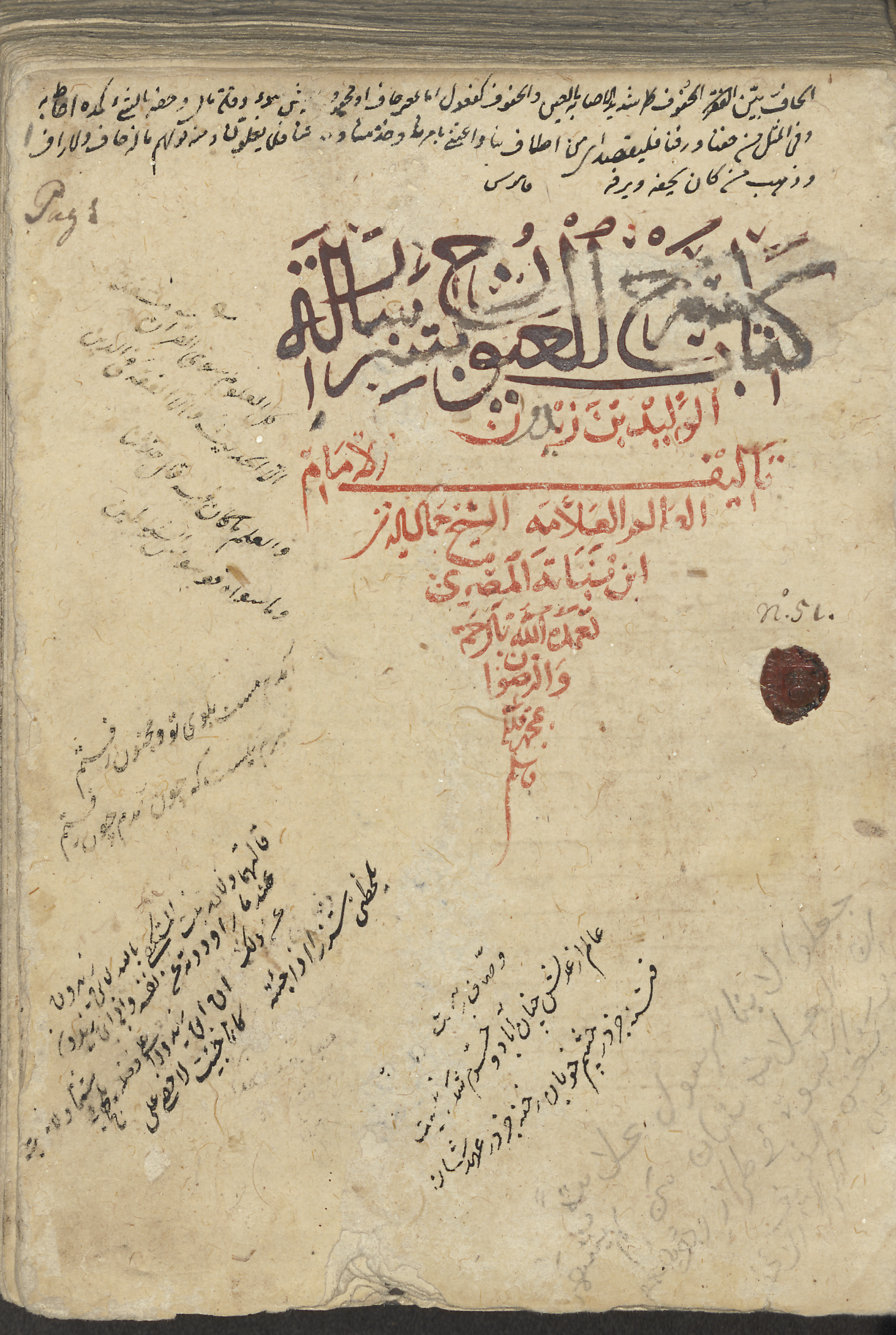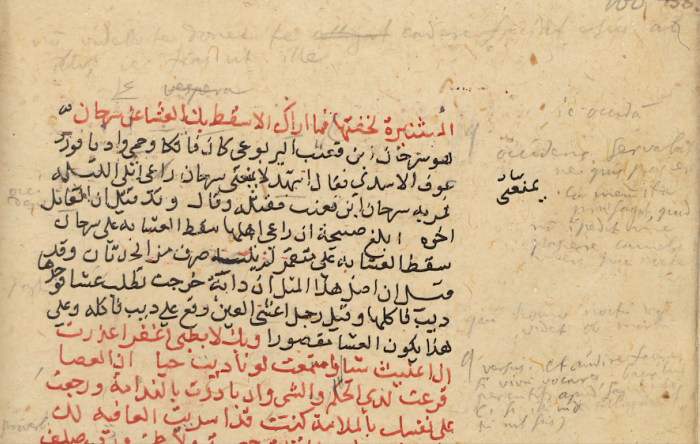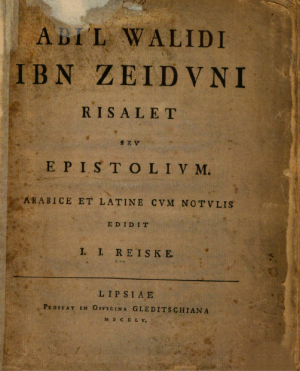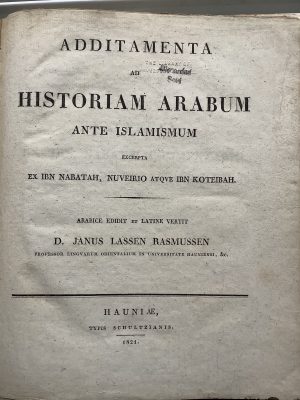About this manuscript
Warner, Constantinople and Leiden
This lesson’s manuscript is one of the many copies of Ibn Nubāta’s Sarḥ al-ʿuyūn (Pasturing at the Wellsprings of Knowledge) which circulated in Ottoman Constantinople. Sarḥ al-ʿuyūn contains concise explanations of manifold aspects of what were considered the ‘classics’ of Arabic culture, and it became very popular as a reference text to train students. Between the sixteenth and eighteenth centuries, manuscripts of Sarḥ al-ʿuyūn proliferated in Ottoman Constantinople in particular, indicating the book’s value in the education of the scholarly and administrative classes.
In 1645 a Bremen-born, Leiden-trained student of Oriental languages, Levinus Warner arrived in Constantinople to work for Dutch diplomatic channels, and from 1655-1665, he served as the Dutch Republic’s envoy to the Ottoman Sultan. In his free time, Warner pursued his interests in Oriental Studies and amassed a collection of some 900 codices, most of which were in Arabic. Warner bequeathed his collection to the Leiden University Library, and all the volumes gradually arrived – in instalments and with a little legal drama along the way – between 1668 and 1674.
Given the popularity of Sarḥ al-ʿuyūn in Warner’s Constantinople, it not surprising that the book caught his attention, and he acquired two manuscript copies: Leiden Manuscript Or. 705 in the frame above, and Or. 817. Warner left no marks in Or. 817, and it is unclear how often he used the book, but he read from Or. 705 intensively. We can tell from the host of pencil annotations made in Warner's hand, and Warner so esteemed Sarḥ al-ʿuyūn that he also made another manuscript copy himself of a partial Latin translation (Or. 1104a).


Signs of Warner’s reading
Warner expressed his ownership of Or. 705 on the title page in a fashion very typical of Middle Eastern manuscript owners: he inscribed a poem. Or. 705 had owners previous to Warner, and they inscribed notes of their own: prose sayings, two verses of poetry in Persian, one Arabic verse which appears in Sarḥ al-ʿuyūn,
and another Arabic poem in praise of studying Islamic sciences. Warner evidently wished to continue their practice and transcribed a poem in the lower-right margin in pencil. He made one error (see Question 1, below): the corrected poem reads as follows:
| إن العلامة شأن من لم يشهر | جعلوا لأبناء الرسول علامة | |
| يغني الشريف عن الطراز الأخضر | نور النبوة في كريم وجوههم |
They compelled the progeny of the Prophet to wear a mark,
But such marks are only for the un-renowned.
The blaze of prophethood shines in their noble faces,
Obviating the noble-born’s need for a green stripe!
The poem, composed by a well-known grammarian, Ibn Jābir al-Hawwārī al-Andalusī ‘The Blind’ (d. 780/1378-9), critiques the Mamluk sultan al-Ashraf Shaʿbān’s order that the descendants of the Prophet’s family must wrap green cloth around their turbans. Given that Sarḥ al-ʿuyūn does not contain any material relevant to the Prophet’s descendants, it is unclear why Warner selected these verses, though four of the other five notes are likewise not entirely in keeping with the book’s content either.
As for the text of Sarḥ al-ʿuyūn, it contains a copy of Ibn Zaydūn's Letter (copied in red ink) and the commentary by Ibn Nubāta (black ink). Warner annotated much of the manuscript, and paid particular attention to the passages of the Letter. Warner corrected errors in the copyist’s original (perhaps using Or. 817 as a guide, since its original scribe more accurately reproduced the Letter), and Warner wrote a Latin translation of the Letter
in the margins.

Studying Warner’s marks in Or. 705 also proffer further evidence about Warner's personal interests and the relative prominence of Sarḥ al-ʿuyūn as a classic work in Warner’s day. The codex contains two books: Sarḥ al-ʿuyūn occupies the first 160 pages, and the following 155 reproduce Ibn ʿAbd al-Ḥakam’s Futūḥ Miṣr (the Conquest of Egypt). Whereas modern scholars greatly prize Ibn ʿAbd al-Ḥakam’s Futūḥ as a historical source, and used this very manuscript to make the modern printed edition, Warner left no pencil marks on any of its pages: he focused his studious attention on Sarḥ al-ʿuyūn alone.
Or. 705 after Warner
Sarḥ al-ʿuyūn remained popular in the Middle East through the eighteenth and nineteenth centuries, as readers continued to value its efficient explanations of the core aspects of the Arabic classical tradition. For the same reasons, European readers were also attracted to the text, and as a result, Or. 705 was destined to not simply gather dust on the Leiden University shelves.

In the middle of the seventeenth century, a Saxon Orientalist, Johann Jakob Reiske (1716-1774), arrived in Leiden and studied Or. 705. He made a verbatim manuscript copy for himself (it now is held in Copenhagen), and citing Or. 705 as his source, he prepared the first-ever printed edition of Ibn Zaydūn’s Letter along with a Latin translation, published in Leipzig in 1755.
The text of Or. 705 also contributed to the first printed Arabic edition of Sarḥ al-ʿuyūn, edited by the Danish Orientalist Jens Lassen Rasmussen (1785-1826), which he published in Copenhagen in 1821 with accompanying Latin translation. Rasmussen did not physically visit Leiden, but since he used Reiske’s copy of Or. 705, the Leiden manuscript can stake a legitimate claim to have been the source for two important publications in Europe’s early Orientalist endeavours to understand Arabic culture.

More about this manuscript: Lessons 2 and 14.
Further reading
For Warner and his collection, see Arnoud Vrolijk, Jan Schmidt and Karin Scheper, Turcksche boucken: the Oriental Collection of Levinus Warner, Dutch diplomat in seventeenth-century Istanbul
(trans. Beverley Jackson and David McKay). Leiden: Lecturis, 2013.
For the fate of a medieval Syrian library, see Konrad Hirschler, A Monument to Medieval Syrian Book Culture: The Library of Ibn ʿAbd al-Hādī. Edinburgh: Edinburgh University Press, 2019.
An Arabic edition and English translation of Ibn Nubāta’s Sarḥ al-ʿuyūn is being prepared by Peter Webb and will be published in the Library of Arabic Literature in 2024. A full history of Sarḥ al-ʿuyūn, its manuscripts and impact on Muslim and European scholarship is forthcoming. Watch this space for details.
Questions
-
Warner made one error in transcribing the poem in on the title page: compare the handwritten poem in pencil with the corrected version of the poem above, and identify Warner’s mistake.
-
The original copyist of the manuscript made numerous scribal errors (see Lesson 13). Warner corrected many of these in pencil, especially the errors occurring in Ibn Zaydūn’s Letter transcribed in red ink by the copyist. Go to page 150 of the manuscript and identify Warner’s corrections in the red-ink passages.
-
Warner also made a number of corrections to the text of Sarḥ al-ʿuyūn (i.e. the black-ink text in the manuscript). One of these corrections occurs on page 8, identify what change he made.
Assignments
-
When reading the manuscript, Warner noted Arabic words which likely must have been new or difficult vocabulary to him, and he pencilled in their Latin translation. Go through the manuscript and find 20 words which he noted and glossed. What is the nature of these words: do they appear rare, unusual or difficult? Consider the words you have found and what their nature might indicate about Warner’s own Arabic knowledge.
-
Other than corrections to the Arabic, the Latin translation of Ibn Zaydūn’s Letter, and the poem on the title page, what other marks did Warner leave in the manuscript? Identify five examples, and consider what they might tell us about how Warner studied this manuscript.
-
Bonus assignment! Try to decipher some of Warner’s Latin notes. Identify five, note the page and line, and translate them.
